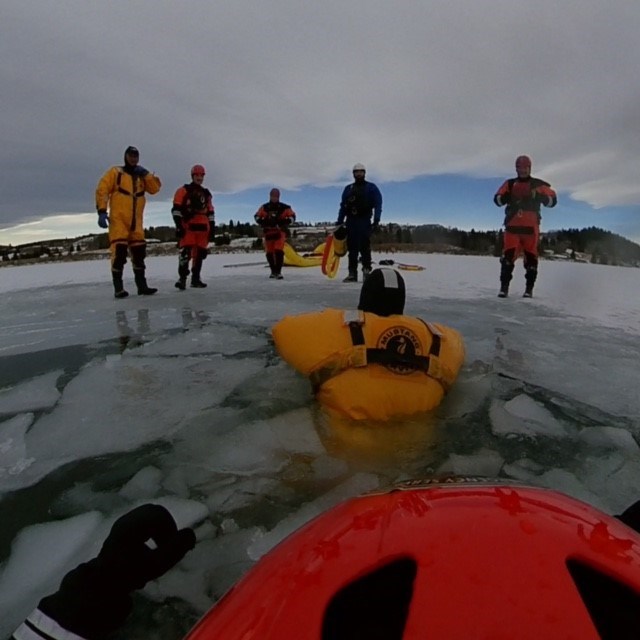COCHRANE— The uncharacteristically warm fall Cochrane has experienced this year has created some hazardous conditions on the bodies of water around town, and Cochrane Fire Services spent the weekend training to address those hazards.
On Saturday (Nov. 21) and Sunday (Nov. 22) Cochrane Fire Services was training its members on ice and still-water rescue situations at Emerald Bay, between Cochrane and Bearspaw Dam.
The first of the two days was spent in the classroom, learning the theories behind ice formation, different types of ice, rescue techniques and getting familiar with the equipment involved in water-based rescues, said Lieutenant of Training, Chris Chyka.
Day two, he said, was putting the theory they learned to work in the frozen waters of Emerald Bay, running drills and practice scenarios.
The constant thawing and freezing cycle bodies of water have gone through during the warm fall has resulted in brittle, weak ice that presents a danger to those who might venture out onto its surface, Chyka said.
“The ice right now is terrible, we’re having nice warm days which is melting the ice, and then at night it gets cold,” he said. “That freeze-thaw cycle is really wreaking havoc on ice formation so what might look strong can be quite week.”
Every year, he said, Cochrane Fire Services gets roughly half a dozen calls regarding rescues off of storm retention ponds, Mitford Pond, the Bow River and other bodies of water around town.
Often it is a dog that has run out onto the ice surface, but sometimes a person requires a rescue from one of these hazards.
“Our primary concern is these storm retention ponds and people venturing out onto those,” he said. “The water levels fluctuate quite a bit, so you never know where the actual ice shelf is forming. You can have one ice shelf very high up, and then the water drops, and then it forms another ice shelf. You can have a couple layers of ice in there, and it can be very poor ice.”
The Bow River presents another dangerous hazard in the community during the cold months, he said.
Chunks of ice form and grow larger as they float along, and will often become stuck near structures like the bridges in town. These chunks form large ice jams that can be appealing to climb on, but it is important to note that the water underneath is still moving, Chyka said.
If you fall through a layer of ice, or slip between many of the crevasses you might be swept away by the current to a place your rescuers cannot reach you, he added.
To conduct the training Cochrane Fire Services contracted Canmore-based Raven Rescue.
Raven Rescue is the Cochrane Fire Services' go-to vendor for all of its rescue programs.
They conduct the department’s rope awareness, technician and operator courses, swift and still water rescue courses as well as boat operations and other technical rescue courses.
“Those guys are truly the subject matter experts. This is not a realm where you want to be dabbling in, you want to have the right guys,” he said




